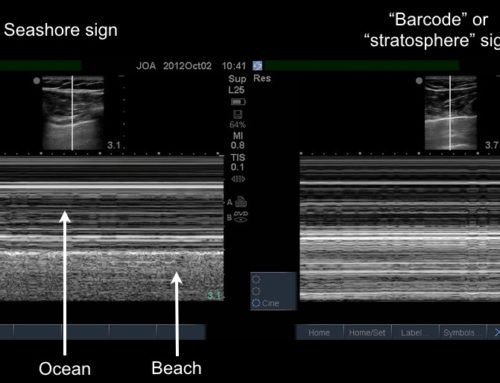It’s #SonoSunday! As most of you know, we have been striving to push our clinical game at RVRS, embracing the ideals of delivering high-quality medicine to the patient’s side, at the site of illness or injury. The most visible part of this, because of its relative rarity in the field, has been our prehospital ultrasound program.
The benefits of ultrasonography in critically ill patients is well-documented, and the most obvious application for EMS. There is, however, utility in performing sonographic exams in other patient populations, where it can provide useful diagnostic information that can be used by Paramedics when making treatment and transport decisions. To demonstrate, we have the following case presentation of a patient we recently cared for.
EMS was called for an elderly male complaining of abdominal pain. Upon arrival, the patient was awake, alert, ambulatory, and in no obvious distress. The patient reported that he had been unable to urinate in any reasonable amount for 2-3 days, and this evening passed a small amount of frank blood when attempting to urinate prior to calling EMS.
The physical exam revealed a diffusely tender abdomen, rated 10/10 by the patient with obvious guarding. The patient denied recent trauma, and the balance of the exam was unremarkable. Vital signs revealed that the patient was moderately hypertensive, but were otherwise within acceptable limits. Medical history was significant only for a recent diagnosis of prostate cancer.
This is obviously not the presentation of a critically ill patient typically encountered by EMS providers. However, treatment and transport decisions can make a great deal of difference in the outcome of a patient like this; is the abdominal pain secondary to just urinary retention, or is this a peritonitic abdomen secondary to a rupture of their bladder?
The former can be reasonably managed at the small community hospital the patient requested, while the latter is a true surgical emergency requiring transport to a tertiary care center.
An ultrasound exam of the patient’s pelvis was performed, revealing a severely distended bladder with a significant amount of debris assumed to be clotted blood, but no obvious free fluid in the pelvis; this patient could be safely transported to the facility they chose.
Had there been a rupture of the bladder, however, definitive care could be significantly delayed by transport to a facility incapable of providing the necessary surgical interventions.
The moral of the story is that we, as EMS providers, often assume that appropriate transport decisions and advanced diagnostics are only valuable to our most critically ill patients; this is not the case at all.


